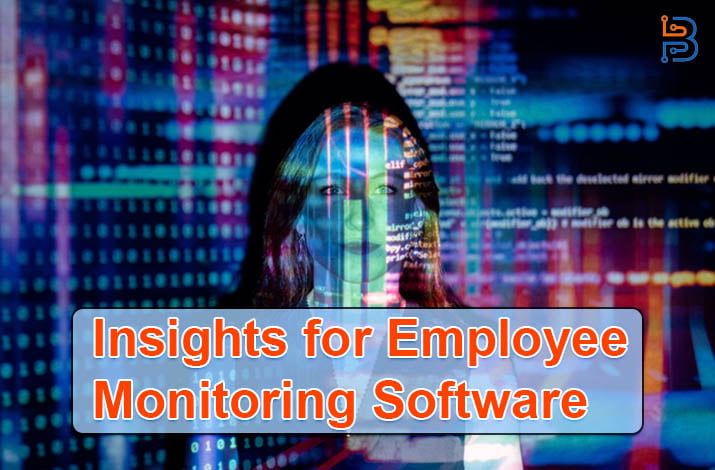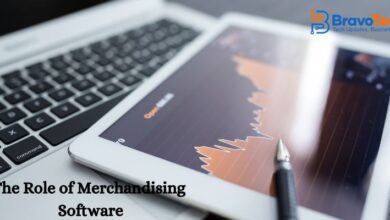Data-Driven Insights for Employee Monitoring Software

In the contemporary business world, where remote work and digital platforms are integral, understanding the nuances of your team’s work habits is more than a managerial responsibility; it’s a strategic imperative. Data-driven decision-making removes the guesswork, providing actionable insights that lead to informed strategies, optimized operations, and, ultimately, a more engaged and productive workforce. One of the primary tools facilitating this informed approach is employee monitoring software.
Far from the Orwellian dystopia that critics fear, when used responsibly, employee monitoring tools can uncover insights that help enhance individual and team performance, safeguard employee well-being, and protect company resources. Below, we delve into how businesses can harness these insights to make astute, data-driven decisions.
Optimizing Work Processes For Efficiency
The first step in harnessing data effectively is understanding the current workflow dynamics. Employee monitoring software, through its various tracking software components, can provide a granular view of how time is being spent, the communication tools being used, and the workflow patterns across different teams.
For instance, tracking software can reveal if employees are spending disproportionate amounts of time on low-impact activities, suggesting a need for better tools or training to streamline the process. Analyzing data patterns helps managers identify bottlenecks, understand the causes of workflow interruptions, and recognize which tasks take longer than necessary.
With these insights, leaders can make informed decisions about deploying resources, whether it’s introducing new software to automate routine tasks or rearranging roles and responsibilities for better synergy.
Enhancing Work-Life Balance
Employee well-being is crucial for maintaining a productive and engaging workplace environment. Monitoring software isn’t just about overseeing work; it’s about understanding work patterns and recognizing the signs of burnout. Data on work hours, break patterns, and overtime instances provide a realistic picture of employees’ work-life balance (or the lack thereof).
Leaders can use this information to encourage healthy work habits, perhaps through enforcing mandatory breaks, restricting access to work platforms after hours, or even offering flexible work schedules to accommodate different lifestyles. By promoting a healthy work-life balance, companies foster a positive culture and, in turn, boost overall productivity and employee satisfaction.
Training And Development Opportunities
Data-driven decision-making extends significantly to employee development. Monitoring tools can highlight specific areas where employees excel or need improvement, allowing managers to personalize training initiatives. For example, if the data indicates that a team struggles with a particular software, leaders can organize targeted training sessions, bringing everyone up to speed.
Further, historical performance data helps in setting realistic benchmarks and individual goals. Employees, aware of these tailored growth opportunities, are likely to be more engaged, knowing their personal development is a company priority, directly impacting retention rates.
Securing Company Data

In the digital age, data security is paramount. Insights from employee monitoring software can play a critical role in safeguarding company data. Anomalies in data access and user behavior can be identified and addressed promptly, mitigating potential internal and external security risks.
For instance, if an employee accesses sensitive information unrelated to their role or at odd hours, the system can flag this behavior for review. Decisions can then be made about tightening data access protocols or initiating immediate responsive actions when a data breach is suspected. This proactive security management is only possible with a comprehensive view of data interactions provided by monitoring software.
Forecasting And Strategy Planning
Finally, the accumulated data from employee monitoring tools can significantly assist in business forecasting and strategic planning. Through a detailed record of performance metrics, managers can predict future trends, employee output, and even financial forecasts with higher accuracy.
These predictive analyses, derived from historical data, allow for more precise strategic decisions, helping companies allocate resources more efficiently, prepare for market shifts, and stay ahead of the competition. Essentially, this long-term data compilation serves as a roadmap for sustained operational efficiency and growth.
Identifying Training Needs through Performance Data
Employee monitoring software can offer valuable insights into the training and development needs of your workforce. Organizations can pinpoint areas where employees may require additional training or support after the analysis of performance data and key metrics.
For instance, if data indicates that a team consistently falls short of specific performance targets, it suggests a need for training or skill development in that area. These insights allow companies to invest in targeted training programs, ultimately improving employee performance and enhancing the overall skill set of the workforce.
Evaluating Employee Engagement and Job Satisfaction
Measuring employee engagement and job satisfaction is crucial for maintaining a motivated and productive workforce. Employee monitoring software can provide insights into these aspects by monitoring employee interactions, communication patterns, and work habits.
For example, by analyzing communication frequency and tone, organizations can gauge team dynamics and identify signs of low morale or disengagement. This data can guide management in taking proactive steps to boost engagement, such as organizing team-building activities, recognizing employee achievements, or addressing concerns to create a more positive work environment.
Monitoring Compliance and Quality Assurance
Compliance with company policies and industry regulations is essential for many businesses. Employee monitoring software can play a critical role in ensuring compliance and maintaining quality assurance. It can track and record interactions, transactions, and actions taken by employees, providing a detailed audit trail.
If discrepancies or non-compliance issues are identified, organizations can take immediate corrective actions to prevent legal or reputational risks. By continuously monitoring for compliance, companies can enhance their adherence to rules and standards, reducing the likelihood of compliance-related issues.
Conclusion
Employee monitoring software, often misconstrued as a surveillance measure, holds transformative potential for businesses when implemented with clear guidelines and genuine intent. The insights derived from these tools empower organizations to make decisions that are not only grounded in real-time data but also indicative of future trends. From optimizing day-to-day operations to safeguarding employee well-being and company resources, the benefits are comprehensive.
The key to success lies in transparent communication about its usage and a firm commitment to using data responsibly. With these measures in place, businesses stand to foster a more engaged, efficient, and secure workplace environment, propelling their growth in an era where data-driven decision-making is no longer optional, but essential.






